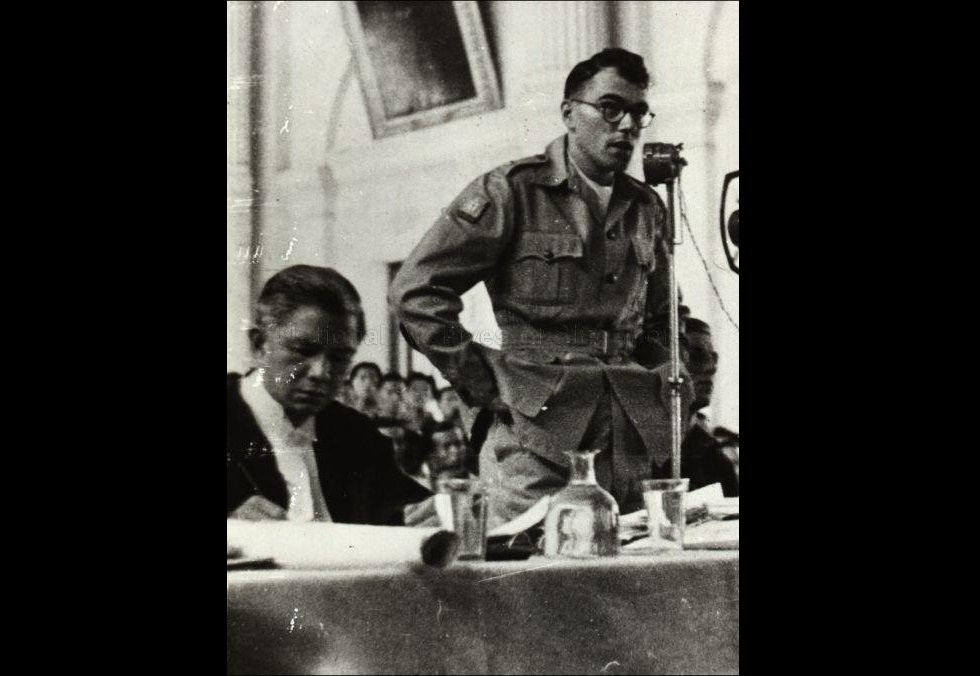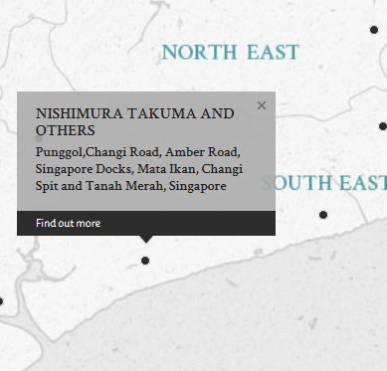Nishimura Takuma [Takoma] and others
|
DATE OF CRIMES
Between 18 February 1942 and 3 March 1942
|
LOCATION OF CRIMES
Singapore, specifically at Ponggol (present-day Punggol), Changi Road, Amber Road, Singapore Docks, Mata Ikan (present-day Changi Airport area), Changi Spit and Tanah Merah.
|
DATE OF TRIAL
10, 11, 12, 13, 14, 17, 18, 20, 21, 24, 25, 26, 27, and 28 March 1947 and 2 April 1947
|
LOCATION OF TRIAL
Victoria Memorial Hall, Singapore
|
Case Summary
Shortly after the entry into Singapore of the Japanese forces in February 1942, several thousand Chinese were massacred. At trial, the death toll was said to be at or about 5000.
The said massacre was carried out in accordance with orders issued by General Yamashita. The declared object was to eliminate Chinese anti-Japanese elements of the following categories: a) former volunteer members, b) communists, c) looters, d) persons harbouring arms, e) persons who obstructed the Japanese operations and f) persons who were disturbers of peace and order or those likely to be so. However, there was ample evidence to show that other elements were included in Yamashita's plan. In any case, the method of screening was so casual as to result in the killing of innocent persons.
In addition, it was apparent that the order was planned even before the actual occupation of the town and that the object of the massacre was twofold, namely, a reprisal against those who assisted in the defence of Malaya and a deterrent to potential or imaginary trouble-makers.
Complicating the determination of culpability was the fact that the orders were deliberately scanty, i.e.they lacked a clear direction in relation to how the operation was to be carried out.
For more information, see:
http://www.legal-tools.org/doc/14a581/
http://www.legal-tools.org/doc/e26aa5/
http://www.legal-tools.org/doc/094653/
http://www.legal-tools.org/doc/444a5a/
http://www.legal-tools.org/doc/8f8194/
http://www.legal-tools.org/doc/42a375/
Prosecution witness Shinosaki Mamoru would, in years to come, be known as the "Japanese Schindler" for saving thousands of Chinese and Eurasians by, amongst other acts, his liberal issue of personal safety passes. He has also written a book called called "Syonan—My Story" about his experience during the Japanese occupation of Singapore.
Nishimura Takuma served 4 years of his life sentence. As he returned to Japan, Nishimura was removed from a ship at Hong Kong, by Australian military police and charged in relation to the Parit Sulong massacre. Nishimura was taken to Manus Island in the Territory of New Guinea, where he faced an Australian military court. Evidence was presented stating that Nishimura had ordered the shootings at Parit Sulong and the destruction of bodies. He was convicted and executed by hanging on 11 June 1951.
The engimatic Colonel Masanobu Tsuji, whom many of the accused agreed was the mastermind behind the massacare, was never brought to justice. He has written a book, "Senkō Sanzenri", about his time in hiding. After returning to Japan, he was elected to the Diet in 1952, and re-elected twice. He travelled to Laos in April 1961 during the Laotian civil war and was never heard from again.
This case featured an officer under instruction, Major A.H. van Zeller.
DEFENDANTS
Nishimura, Takuma. Lieutenant General. From Japanese military. From Japan. Guilty. Life imprisonment. Sentence confirmed.
Kawamura, Saburo. Lieutenant General. From Japanese military. From Japan. Guilty. Death by hanging. Sentence confirmed.
Oishi, Masayuki. Lieutenant Colonel. From Japanese military. From Japan. Guilty. Death by hanging. Sentence confirmed.
Yokota, Yoshitaka. Lieutenant Colonel. From Japanese military. From Japan. Guilty. Life imprisonment. Sentence confirmed.
Jyo, Tomotasu. Major. From Japanese military. From Japan. Guilty. Life imprisonment. Sentence confirmed.
Onishi, Satorou. Major. From Japanese military. From Japan. Guilty. Life imprisonment. Sentence confirmed.
Hisamatsu, Haruji. Captain. From Japanese military. From Japan. Guilty. Life imprisonment. Sentence confirmed.
JUDGES
Forsythe, P.A. Lieutenant Colonel. From British military. Court President.
Clague, P. Major. From British military.
Futcher, A.A. Major. From British military.
Dennis, A.E. Major. From British military.
Tyson, R.H. Captain. From British military.
PROSECUTION
Ward, F.W. Major. From British military.
Lim, R.C.H. Civilian. Barrister.
DEFENCE LAWYERS
Kakuda, K. Civilian. Barrister Supreme Court Tokyo. For Nishimura Takuma and Kawamura Saburo.
Kurose, S. Civilian. Barrister Supreme Court Tokyo. For Oishi Masayuki, Yokota Yoshitaka and Jyo Tomotasu.
Fujiwa, M. Civilian. Barrister. Supreme Court Tokyo. For Onishi Satorou and Hisamatsu Haruji.
DEFENCE ADVISORY OFFICERS
Wait, R.T. Captain. From British military.

